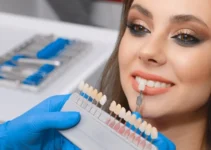Women diagnosed with low ovarian reserve often wonder about their chances of achieving pregnancy. While this condition presents challenges, several medical options exist, including fertility medications, IVF with own eggs when possible, donor eggs, and various supplementary treatments. Success rates vary depending on individual factors such as age, overall health, and specific fertility parameters. Understanding these options and working closely with a reproductive specialist can help develop the most effective treatment strategy for each unique case.
Understanding Low Ovarian Reserve
Low ovarian reserve represents a significant challenge in reproductive medicine, characterized by a reduced quantity and quality of eggs in a woman’s ovaries. This condition affects approximately 10-30% of women seeking fertility treatment and can significantly impact their chances of achieving pregnancy naturally.
The complexity of low ovarian reserve lies in its impact on reproductive potential. When the ovarian reserve diminishes, both the quantity and quality of available eggs decrease, making it more challenging to achieve pregnancy either naturally or through assisted reproductive technologies. Understanding this condition is crucial for developing effective treatment strategies.
Definition and Diagnosis
Low ovarian reserve occurs when the ovaries lose their reproductive potential, resulting in a decreased number and quality of oocytes. The diagnosis involves a comprehensive evaluation using multiple diagnostic tools and markers to assess the ovarian function accurately.
Modern fertility clinics utilize several biomarkers to evaluate ovarian reserve. The most reliable indicators include:
- Anti-Müllerian Hormone (AMH) levels in blood
- Follicle Stimulating Hormone (FSH) levels
- Antral Follicle Count (AFC) via ultrasound
- Estradiol levels
Key Fertility Tests
The assessment of ovarian reserve typically involves a combination of blood tests and imaging studies. AMH testing has emerged as the gold standard, providing the most reliable indicator of ovarian reserve. This hormone is produced by growing follicles and directly correlates with the size of the remaining egg supply.
Ultrasound evaluation through antral follicle counting offers a direct visualization of the ovarian reserve. During this examination, the physician counts the number of small follicles present in both ovaries, providing valuable information about the potential response to fertility treatments.
The timing of these tests is crucial for accurate results. Blood tests should be performed during specific phases of the menstrual cycle, particularly:
- FSH and estradiol on day 3 of the cycle
- AMH can be tested on any day
- AFC is typically performed during the early follicular phase
Common Causes
The etiology of low ovarian reserve is multifactorial, with age being the primary contributing factor. Women experience a natural decline in their ovarian reserve as they age, but the rate of decline can vary significantly among individuals.
Beyond age, several other factors can contribute to diminished ovarian reserve:
- Genetic factors including chromosomal abnormalities
- Autoimmune conditions affecting ovarian function
- Previous ovarian surgery or trauma
- Exposure to toxins or radiation therapy
- Endometriosis
- Smoking and other lifestyle factors
Understanding these various causes is essential for developing personalized treatment approaches. For more detailed information about specific treatment options and success rates, we encourage you to explore our related articles on fertility preservation and advanced reproductive technologies.
Natural Conception Options
Women diagnosed with low ovarian reserve often face unique challenges when trying to conceive naturally. However, research shows that spontaneous pregnancy is still possible even with diminished ovarian reserve. Studies indicate that while success rates may be lower, approximately 10-15% of women with low ovarian reserve can achieve natural pregnancy within a year of trying.
The key to optimizing natural conception chances lies in understanding your fertile window and timing intercourse accordingly. Modern fertility tracking methods, combined with regular monitoring of hormonal levels through blood tests, can significantly improve the chances of natural conception. The PRGF-Endoret® technology has shown promising results in supporting the implantation process, potentially reducing failure rates by up to 50%.
It’s important to note that age remains a crucial factor, with better outcomes observed in women under 35, even with low ovarian reserve. Regular consultations with fertility specialists and proper timing of conception attempts can maximize success rates.
Lifestyle Modifications
Making strategic lifestyle changes can significantly impact fertility outcomes for women with low ovarian reserve. Stress reduction plays a crucial role, as elevated cortisol levels can negatively affect reproductive hormones. Implementing stress-management techniques such as meditation, yoga, or regular exercise can help optimize your body’s natural fertility potential.
Research suggests that maintaining a healthy body mass index (BMI) is particularly important for women with low ovarian reserve. Consider these essential lifestyle modifications:
- Maintain regular physical activity (30 minutes daily of moderate exercise)
- Get adequate sleep (7-9 hours per night)
- Avoid smoking and limit alcohol consumption
- Practice stress-reduction techniques
- Maintain a balanced body weight
Environmental factors also play a significant role in fertility. Reducing exposure to environmental toxins, including certain plastics, pesticides, and heavy metals, can help protect egg quality and quantity.
Supplements and Nutrients
Proper supplementation can play a vital role in supporting fertility for women with low ovarian reserve. Coenzyme Q10 (CoQ10) has shown promising results in improving egg quality and quantity. Research suggests that doses between 200-600mg daily may be beneficial for women trying to conceive.
Essential nutrients that support fertility include:
- Vitamin D3 (2000-4000 IU daily)
- Omega-3 fatty acids (1000-2000mg daily)
- Folate (800mcg daily)
- Antioxidants like Vitamin C and E
- DHEA (under medical supervision)
When combined with PRGF-Endoret® treatment protocols, these supplements may enhance the overall success rates of conception. It’s crucial to remember that all supplementation should be discussed with your healthcare provider, as individual needs may vary based on specific circumstances and medical history. Understanding your fertility journey is crucial for success. We encourage you to explore our other articles about advanced fertility treatments, hormone optimization, and success stories from women with similar challenges. Your path to parenthood may have unique aspects, but with proper guidance and support, positive outcomes are possible.
Medical Treatment Options
When facing low ovarian reserve, modern medicine offers various treatment approaches that can significantly improve the chances of achieving pregnancy. The key is early intervention and personalized treatment protocols based on individual patient characteristics and hormone levels.
Recent medical advances have shown that combining traditional fertility treatments with innovative approaches like PRGF-Endoret® technology can enhance success rates. This specialized treatment, which requires just a single blood extraction, provides material for two embryo transfers, optimizing the implantation environment and potentially reducing failure rates by up to 50%.
The medical community now recognizes that successful treatment often requires a multi-faceted approach, incorporating both medication and advanced reproductive technologies. The PRGF-Endoret® system, with its fibrin-free special formulation, represents a significant advancement in this field.
Fertility Medications
Modern fertility medications play a crucial role in managing low ovarian reserve. The most commonly prescribed medications include gonadotropins and other hormonal treatments that stimulate follicle development and egg production.
The PRGF-Endoret® protocol integrates seamlessly with traditional fertility medications, offering a unique advantage through its specialized preparation process. The treatment can be prepared at any point during the menstrual cycle and stored at -20°C for up to one year, providing flexibility in treatment timing.
Ovulation Stimulation
Ovulation stimulation protocols are carefully designed to maximize egg production while minimizing risks. The process typically involves:
- Daily hormone injections to stimulate follicle growth
- Regular monitoring through blood tests and ultrasounds
- Precise timing of medication administration
- Customized dosing based on individual response
With the PRGF-Endoret® system, patients benefit from a standardized protocol involving three strategic instillations of 1ml each during the embryo transfer process, optimizing the environment for successful implantation.
Assisted Reproductive Technologies
Advanced reproductive technologies have revolutionized treatment options for patients with low ovarian reserve. In Vitro Fertilization (IVF) remains the gold standard, with various protocols adapted to individual patient needs.
The integration of PRGF-Endoret® technology enhances traditional ART procedures by providing a specialized environment for embryo transfer. The kit yields 6ml of product, sufficient for two complete embryo transfers, maximizing the chances of successful implantation.
Modern ART clinics increasingly recognize the value of combining multiple approaches, including:
- Specialized embryo culture conditions
- Advanced genetic testing options
- Precision-timed transfer protocols
- Enhanced implantation support systems
If you found this information helpful, we encourage you to explore our other articles about fertility treatments, embryo transfer success rates, and innovative reproductive technologies. Understanding all available options is crucial for making informed decisions about your fertility journey.
Alternative Family Building Options
When facing challenges with natural conception due to low ovarian reserve, couples have several scientifically-proven alternatives to build their family. Modern reproductive medicine offers multiple pathways to parenthood, each with its own success rates and considerations. Understanding these options is crucial for making informed decisions about your fertility journey.
The advancement of reproductive technology has made it possible to achieve pregnancy through various methods, with success rates improving significantly over the past decade. These alternatives have helped countless couples experiencing fertility challenges to fulfill their dreams of parenthood, with success rates ranging from 40% to 60% depending on the chosen method and individual circumstances.
Egg Donation
Egg donation represents one of the most successful fertility treatments available today. This process involves using eggs from a carefully screened donor, which are then fertilized with the partner’s sperm through In Vitro Fertilization (IVF). The resulting embryos are transferred to the intended mother’s uterus using advanced techniques like PRGF-Endoret® that may help reduce implantation failure rates.
The egg donation process typically involves several key steps:
- Comprehensive donor screening and selection
- Synchronization of donor and recipient cycles
- Controlled ovarian stimulation of the donor
- Egg retrieval and fertilization
- Embryo transfer to the recipient
Recent studies have shown that egg donation treatments combined with advanced implantation techniques can achieve pregnancy rates of up to 65% per transfer cycle, making it one of the most effective fertility treatments available.
Adoption and Other Alternatives
Adoption represents a fulfilling path to parenthood that has helped countless families grow through love rather than genetics. The adoption process has evolved significantly, offering various routes including domestic, international, and foster-to-adopt programs. Each pathway has its own unique requirements and timeframes, but all share the beautiful outcome of creating forever families.
Beyond traditional adoption, other family-building alternatives include:
- Embryo adoption/donation
- Foster parenting
- Gestational surrogacy
- Traditional surrogacy arrangements
Each of these options comes with its own set of considerations, including legal requirements, emotional aspects, and success rates. Working with experienced professionals and support groups can help navigate these choices effectively.
If you’re interested in learning more about fertility treatments and family-building options, we encourage you to explore our other articles on topics such as advanced reproductive technologies, emotional support during fertility journeys, and success stories from families who have walked similar paths.
Success Rates and Expectations
Understanding success rates in fertility treatments is crucial for setting realistic expectations. The introduction of PRGF-Endoret® technology has shown promising results, potentially reducing implantation failure rates by up to 50% when combined with traditional fertility treatments. This advancement represents a significant step forward in reproductive medicine, particularly for patients with challenging fertility scenarios.
Modern fertility treatments offer various options, each with different success rates depending on individual circumstances. The use of specialized protocols, including controlled ovarian stimulation and embryo transfer optimization, has significantly improved outcomes in recent years. The ability to perform multiple transfers with a single blood extraction has revolutionized the approach to fertility treatment, making it both more efficient and cost-effective.
Statistical Overview
Success rates vary significantly based on multiple factors, including age, overall health, and specific fertility challenges. Recent studies incorporating PRGF-Endoret® technology have shown encouraging results:
- Women under 35: Success rates of 40-50% per embryo transfer
- Women 35-37: Success rates of 30-40% per embryo transfer
- Women 38-40: Success rates of 20-30% per embryo transfer
- Women over 40: Success rates of 10-20% per embryo transfer
The implementation of multiple embryo transfers with specialized preparation protocols has shown to increase cumulative success rates significantly. The ability to store and preserve treatment materials at -20°C for up to one year allows for optimal timing and multiple attempt opportunities. Clinical studies have demonstrated that the use of fibrin-free formulations, such as those used in modern protocols, can significantly improve implantation rates by avoiding potential interference with the embryo implantation process.
Making Informed Decisions
When considering fertility treatment options, several key factors should be evaluated:
- Individual medical history and fertility diagnosis
- Age and ovarian reserve status
- Previous treatment experiences
- Treatment timeline and scheduling flexibility
- Emotional and physical preparation capabilities
The optimization of treatment protocols, including the timing of embryo transfers and the use of advanced preparation techniques, plays a crucial role in success rates. The ability to perform multiple procedures from a single preparation allows for more strategic treatment planning.
Modern treatment approaches emphasize the importance of personalized care. The flexibility of preparation timing during the menstrual cycle, combined with the ability to store materials for future use, allows for more customized treatment plans that can adapt to individual needs and circumstances.
For more comprehensive information about fertility treatments and success rates, we encourage you to explore our other articles on specific treatment protocols, advanced reproductive technologies, and factors affecting fertility success rates. Understanding all available options is key to making informed decisions about your fertility journey.
What Are The Treatment Options For Women With Low Ovarian Reserve?
Understanding your options when dealing with low ovarian reserve is crucial for achieving pregnancy. Modern reproductive medicine offers innovative solutions that can significantly improve your chances of success.
How Can PRGF-Endoret® Treatment Help Women With Low Ovarian Reserve?
PRGF-Endoret® offers a promising solution for women with low ovarian reserve through its specialized protocol. This treatment involves a single blood extraction that provides enough material for two embryo transfers, maximizing your chances of success. The fibrin-free formulation ensures optimal conditions for embryo implantation, with three carefully timed instillations of 1ml each. The treatment can be prepared at any point in your menstrual cycle and can be stored frozen for up to one year, offering both convenience and flexibility in your fertility journey.




